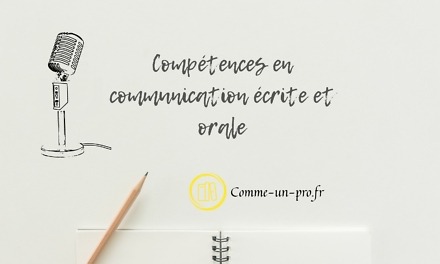The report: 4 essential points to know to succeed
You must make a report, or a report, at the request of your manager. But, you don't know where to start or how to formulate it.
Here, I reveal a simple procedure in 4 points in order to realize this report efficiently and with a certain speed. It must be written in a logical chronology.
What is the use of a report?
It gives the ability to the person for whom it is intended to be able to rely on the data presented to decide on an action. The information that is recorded in the report makes it possible to answer one or more questions necessary for decision-making.
That said, an employee is able to write a report in order to offer suggestions to her supervisor on a specific topic in order to make improvements, for example on the organization of a service or the replacement of materials. A report is an excellent way of communicating between a superior and his subordinates.
Depending on the purpose of the report, its presentation may be different, however the procedure that I reveal below is valid for all the reports you will have to make.
First point - The request must be precise and explicit.
This first point will be the essential point on which all your work will be based. It will also delimit the area concerned.
The recipient of the report
- What exactly does he want from your report?
- What are the goals and objectives of the report for him?
- How useful will the report be for your recipient?
- Does the recipient already know the subject?
- Know what his knowledge is so as not to repeat information already known.
The case and the modalities
- What is the situation ?
- What are the reasons linked to the request for the report: difficulties, transformations, evolutions, modifications, improvements?
Second point - consider, select and gather essential information.
The information can be many, whether notes, documents or other reports, and various sources, but what is important is to be selective to remember only those that are essential, essential and essential and not to be carried away by information of less interest or repetitive that could harm the final report. You should therefore only use the most appropriate information corresponding to the requested report.
Third point - organize and implement the plan
Typically, the plan begins with an introduction, then continues with development, and ends with a conclusion.
Below, the exposed plan is the one generally met. The role of introduction and conclusion do not differ, keeping their intrinsic role. On the contrary, the development can be conceived in a variable way according to the report that you will have to realize.
Introduction of the report
It provides essential information related to the very reason for the report; its motivations, its intentions, its raison d'être, its prerogatives.
This information should bring together in a few words the purpose of the report, in a concise text while being detailed and complete.
It is absolutely inadvisable to disregard the introduction, as it first describes the precise data of the request, allowing both the recipient and the report writer to be certain that they have understood each other. It also helps to remember the terms of the request, the situation, the conditions when the report is not immediately examined or if it is necessary to reconsider it later.
The development of the report
Development is commonly divided into three sections.
- A tangible and impartial inventory of the situation or context, that is, a detailed statement of what is already in place.
- A clear judgment on what is in place highlighting both the positive and the negative aspects while proposing an analysis just as evocative and concrete as necessary.
- Advice, suggestions and recommendations, as far as possible associated with the benefits that fall to them.
The conclusion of the report
It should not contain any new subject that would not have been indicated in the development. Without being an abbreviated speech of the development, it is there to bring an answer by proposing clearly one or the following solutions to the recommendations specified in this one.
Fourth Point - Writing the Report
Some rules common to all editorials are to be respected. Emphasis will be placed on an intelligible and accessible vocabulary flawless spelling for more professionalism, short sentences for a better understanding, an airy structure of the paragraphs for a good reading fluency.
Taking special care in the form of its report can offer the reader or recipient an ease and reading comfort essential.
- You must be concise and explicit in your writing
- To ensure a better fluidity in the reading of the report, refer the reader to an appendix which will bring some complements to your explanations when it is necessary.
- Plan a summary when your report spans more than three pages, which allows the recipient to orient himself in his reading, if it is his choice.
- When it is profitable or indispensable, integrate tables and other graphs reflecting your writing to illustrate the data. They can be essential in some cases for a good understanding.
- Do not omit the titles and subtitles to delimit each part of your report to win, there too, in fluidity.
In conclusion: What to remember
- Properly interpreting and understanding the application allows you to respond without being beside the subject to gain efficiency.
- In your report, you are able to share your ideas by taking a stand against the simple report.
- To be effective, your report must provide answers to the questions posed by its recipient, hence the overriding interest of the whole of its presentation; drafting, structure, statement, and its unfolding; introduction, development, conclusion.
- Explain your arguments, observations and proposed solutions.
For to improve fitness on Microsoft Word, this 15-minute detour on YouTube will be more than useful to you.




